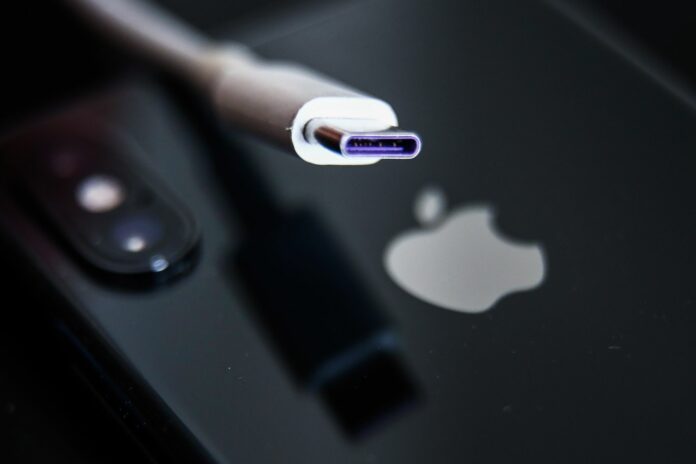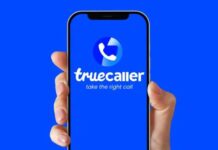
Apple executive Greg Joswiak has confirmed that the company will follow the European Union’s requirement for mobile devices to use USB-C by 2024, which was signed into law recently.
For now, the iPhone uses Apple’s proprietary connector, Lightning. Although Apple is on the USB Implementers Forum, it began using Lightning with the iPhone 5 in 2012, two years before the USB-C specification was finalized, although there is some overlap in function between the two.
Under the EU rules, manufacturers wishing to sell headphones and headsets, handheld video game consoles and portable speakers, e-readers, keyboards, mice, portable navigation systems, earbuds, and any other device charged with a cable which draws up to 100W in the single market will have to ensure they are equipped with a USB Type-C port.
The rationale is “[fewer] chargers for our consumers… a fairer deal to our environment, because ultimately we generate 13,000 to 15,000 tonnes of electronic waste of chargers that we barely ever use. One in three chargers that is bundled with these products are never opened,” said Maltese MEP Alex Agius Saliba, rapporteur on the issue, when the change was announced in summer.
While this won’t be a problem for today’s Android smartphones and laptops – or MacBooks and iPads – which are already compatible with USB-C, Apple is feeling a little hard done by.
In an interview with journalist Joanna Stern for the Wall Street Journal’s WSJ Tech Live event, Apple senior vice president for worldwide marketing Joswiak said: “Obviously we’ll have to comply, we have no choice.”
Stern kicked off by unveiling a mounted image of the rival standards, to which senior veep for software engineering Craig Federighi uttered: “Terrifying.”
Asked what he sees, Joswiak diplomatically said: “I see two really cool connectors, the two most popular connectors in the world right now.”
“One of them has a much better name, though, don’t you think?” quipped Federighi.
But pressed on what Stern described as “a mess,” Joswiak argued that although governments regulate with the best intentions, this can lead to companies being forced into standards that aren’t the best for what they want to achieve. He implied such rules limit innovation and that the problem had already been solved with detachable cables.
He also parroted arguments Apple has been making for years, namely that it would render the billion or so Lightning connectors in circulation as e-waste when the EU move is supposed to limit waste.
This comes off as disingenuous, however. Above all, Apple wants control over how people use its products and who can make Apple parts. Apple doesn’t want to compete with others on products for its own phones. A Lightning to USB cable costs as much as $19 through Apple’s website. The standard also helps keep consumers within Apple’s “walled garden” – in that once you’re an iPhone owner, you’ll always be an iPhone owner.
But USB-C has won out as the vendor-neutral standard. There isn’t much benefit to Lightning except maybe the lower profile, otherwise USB-C can do everything Lightning can, but Lightning can’t do everything USB-C can.
Lightning has no specified lifetime, whereas USB-C has a standardized 10,000 plug-unplug endurance. The contact springs are inside the cable, not the socket, meaning that while your cable may wear out, your device socket won’t, which can’t be said for the iPhone.
USB-C is fast enough for 8K video, Lightning is not; USB-C supports Thunderbolt 3, USB 2.0, USB 3.1 Gen 1 and Gen 2, USB 3.2, DisplayPort, HDMI, Lightning only supports USB 2.0 and USB 3.1 Gen 1; USB-C handles up to 100W power delivery, Lightning can only pull up to 14W. So on so forth.
But that isn’t to say that USB-C is perfect, far from it. Just because a cable is USB-C doesn’t mean that it will work with your USB-C device, which is needlessly confusing right off the bat. You might have a 20W USB-C cable come in the box with your new smartphone, but it could be cooked if used with a 100W laptop power adapter. Ultimately, you risk damaging your electronic equipment if using cheap, defective or incompatible USB-C connectors – yet they all look the same to the average person.
The EU regulations aim to tackle this by requiring device manufacturers to include dedicated labels about the charging characteristics of new devices so that consumers would be more easily able to tell if their existing chargers were compatible. If not, you’d have to buy another cable, which doesn’t exactly solve the problem the EU claims to be addressing.
Even so, Apple appears to have rolled over because it wants access to the European market, one too lucrative for any business to have to give up. Though Joswiak wouldn’t say when the iPhone would move to USB-C, analyst Ming-Chi Kuo believes that Apple will ditch Lightning by the second half of next year, probably with the upcoming iPhone 15.










